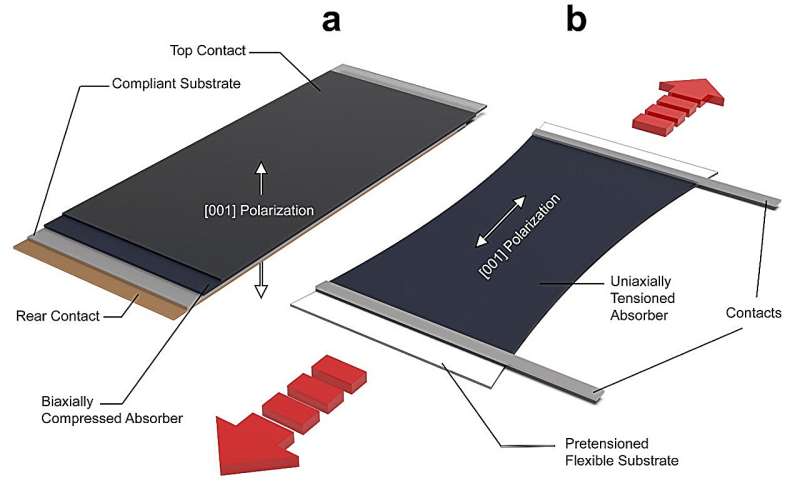Chalcogenide perovskites: The next frontier in solar technology?
For decades, silicon has been the backbone of the solar industry, but it’s nearing its theoretical efficiency limit of 29.4%. To push beyond this cap, scientists are turning to tandem solar cells, which have layered materials to capture more sunlight. However, finding the right companion materials is a daunting task due to defects that hinder their efficiency. Silicon’s dominance owes much to the microchip industry’s ability to produce flawless wafers—a standard that newer materials struggle to meet.
Take CZTS, for example, a material made of copper, zinc, tin, and sulfur or selenium. It’s abundant, eco-friendly, and low-cost, but its susceptibility to defects has slowed its adoption as a practical solar material.
Halide perovskites: A game-changer with challenges
A more promising material is halide perovskites, which have made incredible strides in efficiency—rising 579% in just 12 years (2009–2021). By comparison, silicon’s peak improvement was only 57% over a similar period.
Halide perovskites are exceptional because they tolerate defects better than most materials. Their unique structure provides several advantages:
- Ferroelectricity: They create polarized regions when exposed to electric fields, improving the extraction of electrons and minimizing energy loss.
- Rashba Effect: This feature extends the lifespan of electrons, making them more efficient at generating electricity.
- Large Polarons: These quasi-particles shield electrons from defects, enabling smoother movement through the material.
- Hot Phonon Bottleneck: This slows energy loss from excited electrons, converting more sunlight into electricity.
However, halide perovskites aren’t perfect. Most of them contain lead, posing environmental risks, and they degrade when exposed to heat, light or air, limiting their durability and commercial use.

Enter BaZrS3: A promising new contender
While halide perovskites have captured attention, another material is emerging as a contender: BaZrS3 (BZS), a type of chalcogenide perovskite (chalcogenides are a class of material that include sulfides, selenides and tellurides). Unlike halide perovskites, BZS is stable, non-toxic, and retains properties favorable for solar cells.
Using supercomputers at NCI (National Computational Infrastructure), researchers at the Australian Center for Advanced Photovoltaics (ACAP) discovered a version of BZS with weak ferroelectricity. By applying strain, they enhanced its properties to mimic the exotic traits of halide perovskites.
In the paper published in Communications Materials, Alireza Yaghoubi and colleagues propose an ambitious design: stacking up to 100 ultrathin, semi-transparent layers of BZS to boost efficiency. When paired with existing silicon solar technologies, this could achieve efficiency levels beyond 38%.
Despite its promise, Yaghoubi says making BZS solar cells is challenging. “Thermodynamics is a two-way road. If something is so stable that it won’t easily break down, it also means it is very difficult to make in the first place.” He continued “Most chalcogenides prefer sulfur over oxygen, but in the case of BZS, both zirconium and barium have a high affinity for oxygen. We need a significantly more controlled environment to avoid contamination.”
Chalcogenide perovskites: The future of solar power?
BaZrS3 could represent the next leap in solar technology. While halide perovskites have paved the way with their remarkable efficiency gains, issues like toxicity and instability limit their commercial potential.
BZS offers a stable, non-toxic alternative with the promise of higher efficiencies. However, developing efficient production methods remains a critical challenge. With continued innovation, BZS and similar materials could lead to cleaner, more efficient solar energy, ushering in a new era of sustainable power.
This story is part of Science X Dialog, where researchers can report findings from their published research articles. Visit this page for information about Science X Dialog and how to participate.
More information:
Alireza Yaghoubi et al, Exotic ferroelectricity in strained BaZrS3 chalcogenide perovskite for photovoltaics, Communications Materials (2024). DOI: 10.1038/s43246-024-00705-y
Alireza Yaghoubi is an award-winning designer, serial entrepreneur and materials scientist. Using a combination of density of functional theory and experimental techniques, he is currently developing chalcogenide perovskite solar cells at Xiaojing Hao’s Group at UNSW.
Citation:
Chalcogenide perovskites: The next frontier in solar technology? (2024, December 10)
retrieved 10 December 2024
from https://techxplore.com/news/2024-12-chalcogenide-perovskites-frontier-solar-technology.html
This document is subject to copyright. Apart from any fair dealing for the purpose of private study or research, no
part may be reproduced without the written permission. The content is provided for information purposes only.

Comments are closed